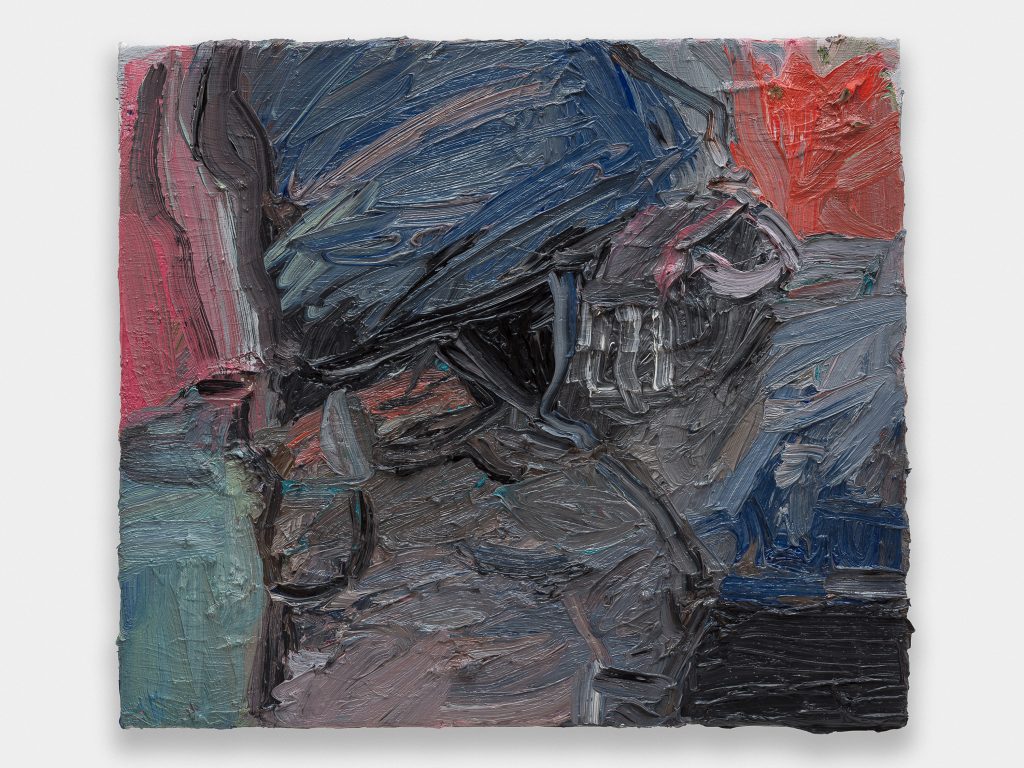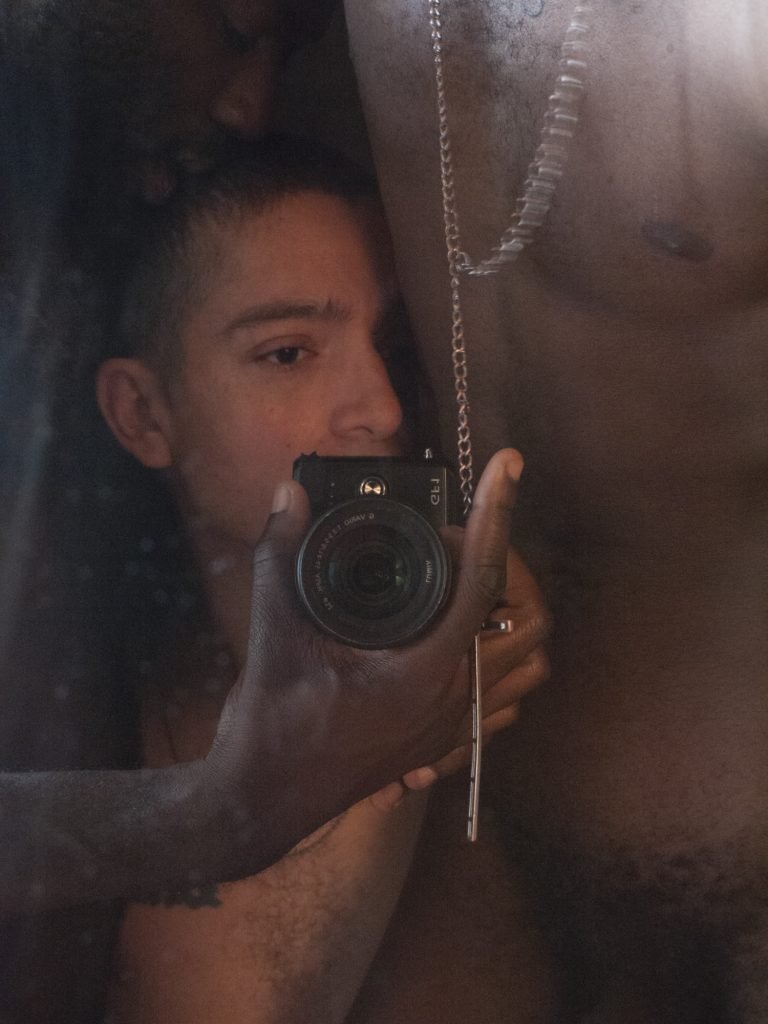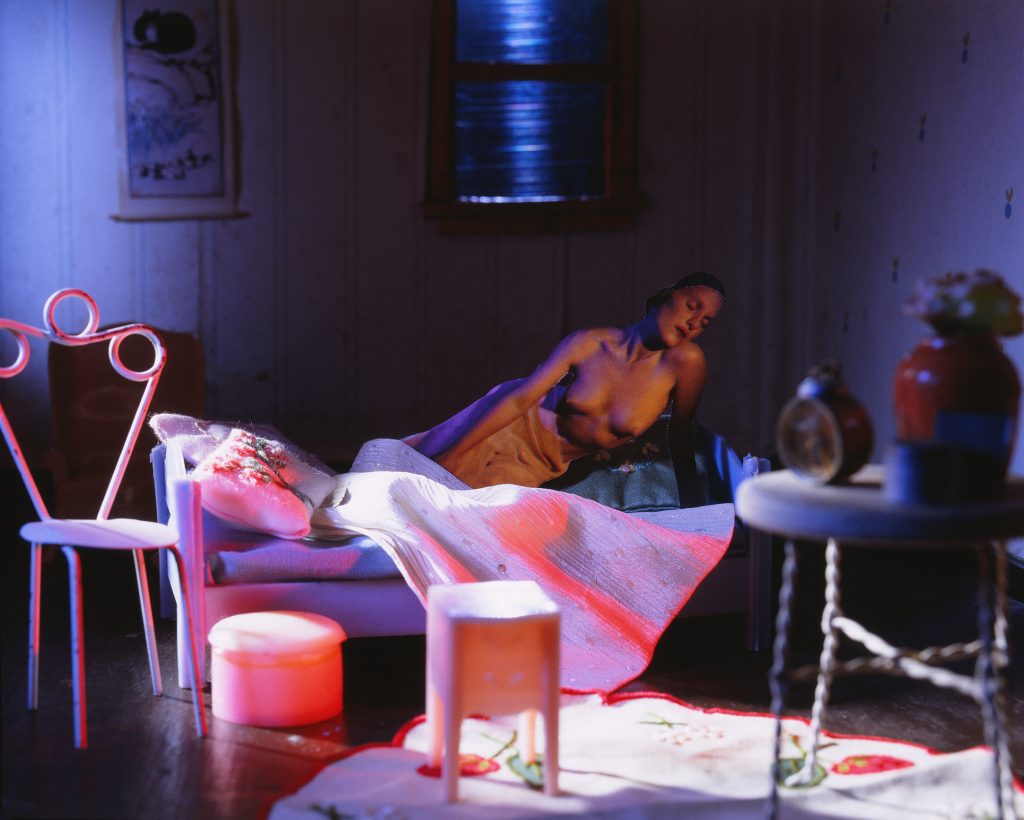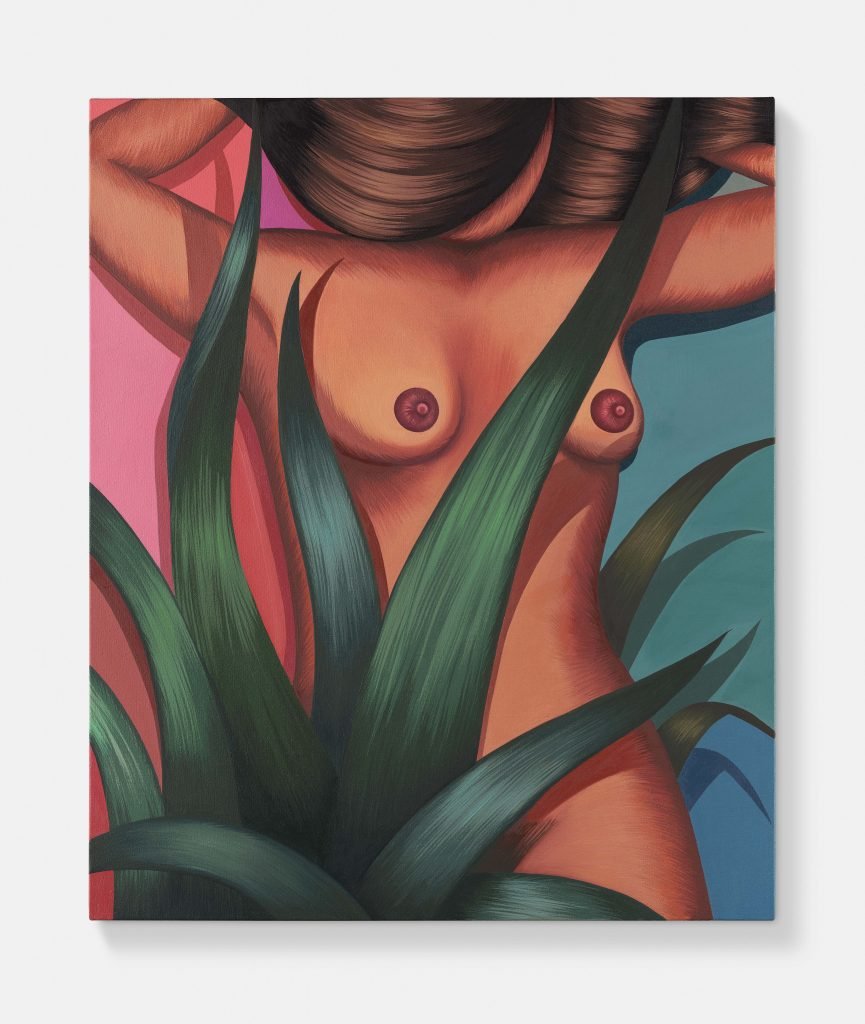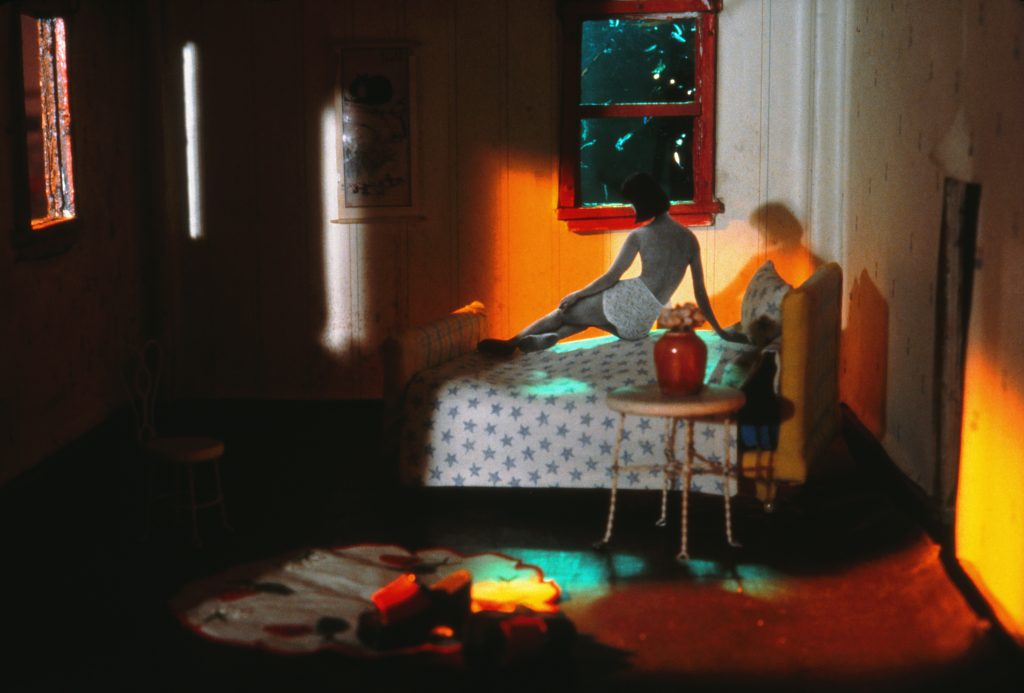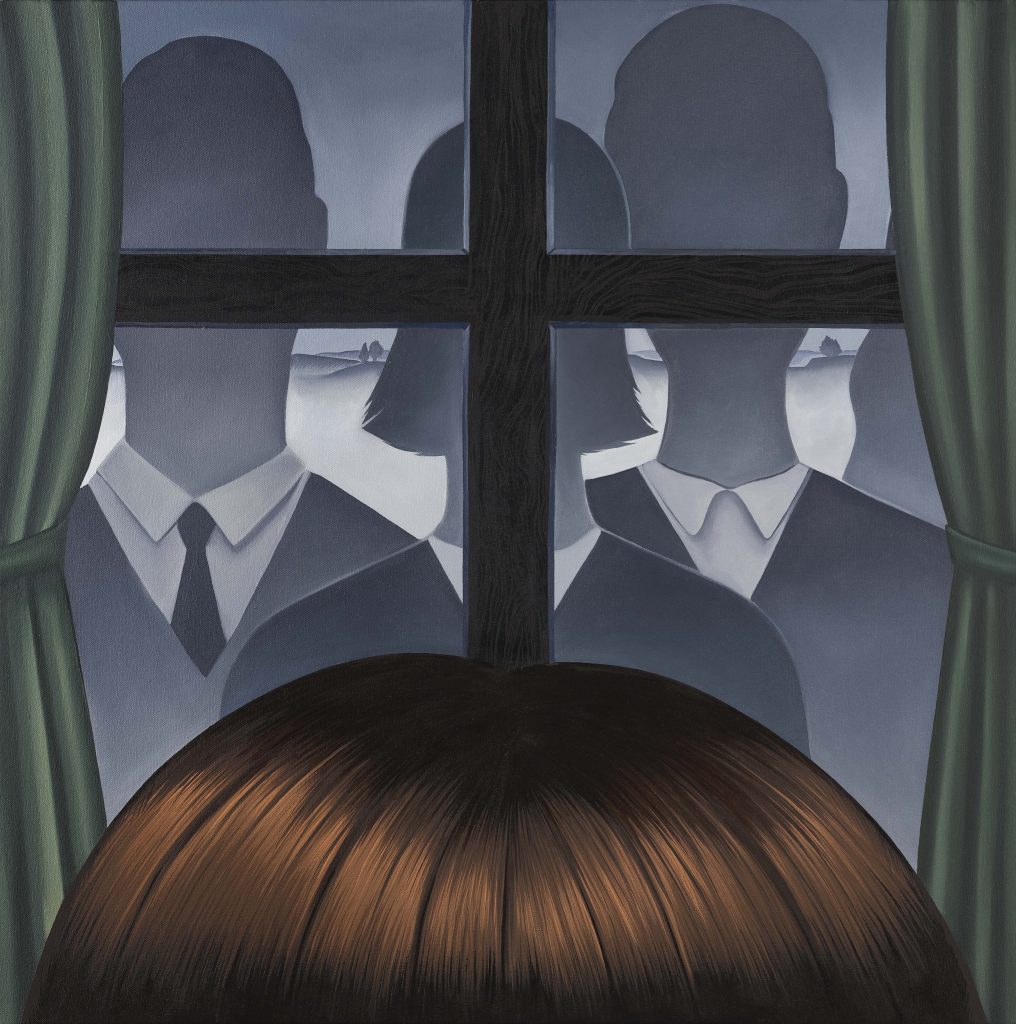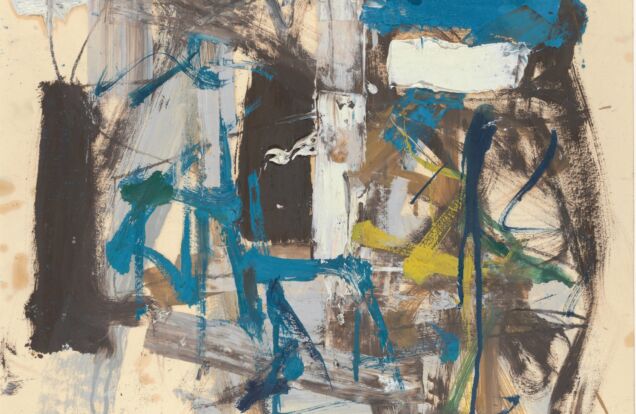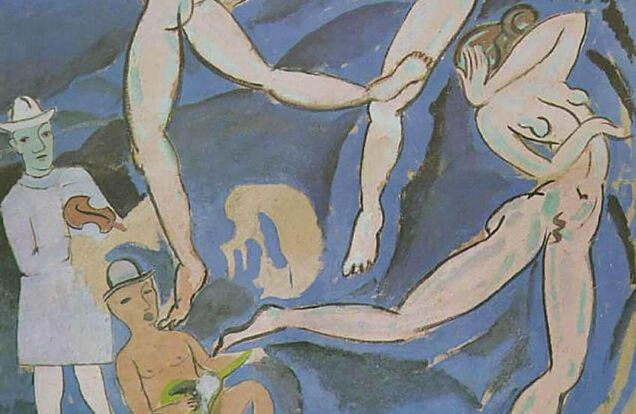HITCHCOCK HOMAGE
Voyeurism, Suspense + Intimacy
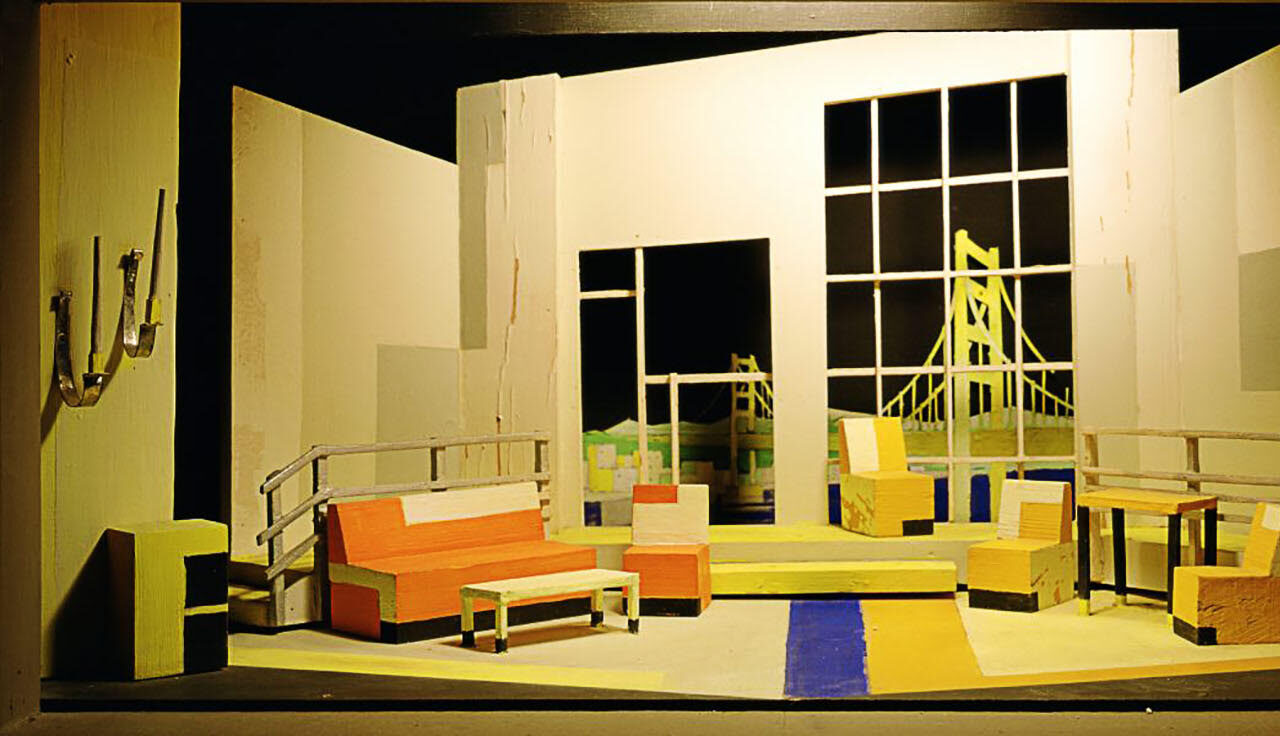
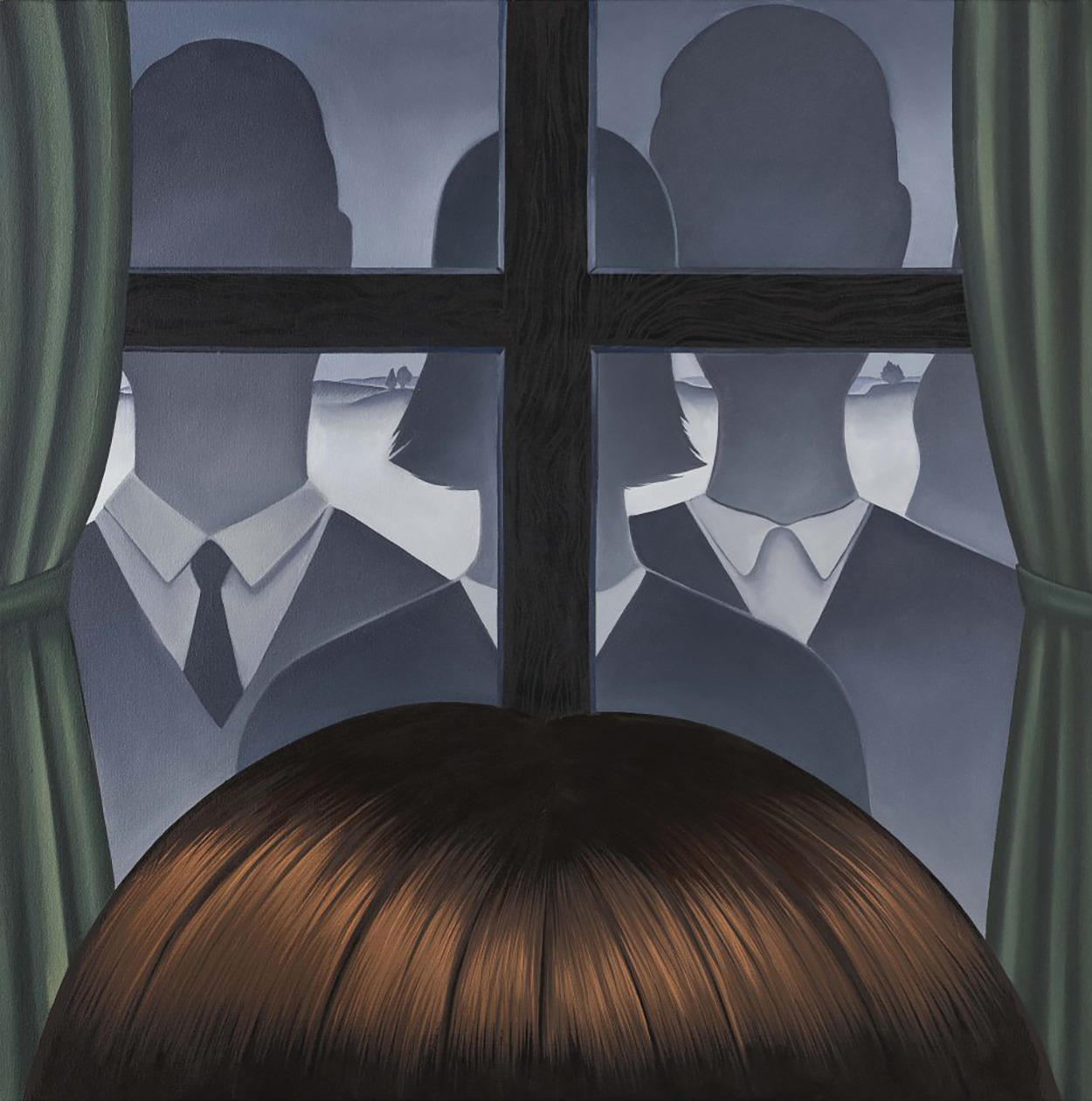
‘Rear Window’ is the title of a 1954 Alfred Hitchcock film starring James Stewart and Grace Kelly, and it is also the title of a new online White Cube exhibition inspired by the renowned director. Many of Hitchcock’s works place particular emphasis on voyeurism, seduction, and the act of looking (including the dangers that come with it.) The group exhibit, which runs through January 19, 2021, explores these themes, with each artist featured examining them in their way. White Cube has several physical locations and also offers online exhibitions that are accessible worldwide.
The show is compared to a lock-down movie, “in the 1954 thriller, a photojournalist is confined to his New York apartment after breaking his leg and succumbs to an obsession with watching his neighbors. The audience is made complicit in his voyeurism as, unable to tear himself away from his window, he witnesses dramatic scenes unfold within his field of vision.” The art show follows a similar narrative, with some works that are direct interpretations of the film. Featured are paintings and photographs by eleven incredible artists: Jeff Burton, Gillian Carnegie, Julie Curtiss, Ellen Altfest, Celia Hempton, Danica Lundy, Judith Eisler, Laurie Simmons, Paul Mpagi Sepuya, Jeff Wall, and Carrie Mae Weems; each interpreting the concept of seeing and voyeurism in their way by building scenes and storylines from the point of view of an onlooker. When observing a setting for an extended period, we develop the power to transform it or find a deeper meaning (which may become more apparent or unclear the longer we watch.)
Many of these works have a healthy cinematic appearance, whereas others lean more towards fine art. Artist Jeff Wall, for example, presents works inspired by films and set up as movie scenes. Laurie Simmons also stages scenes for the camera using dolls and furniture from dollhouses, arranging them to create mature and psychologically-charged environments. Carrie Mae Weems takes photographs that look like film stills (mostly depicting domestic life and the intimacy that comes with it.) The inspiration behind Judith Eisler’s paintings comes from movies she loves but is seen from a more objective perspective. The use of color and texture in images by Celia Hempton, Gillian Carnegie, or Julie Curtiss is spectacular and perfectly captures the feeling of intimacy.
It’s an excellent project done by presenting works that resonate with the 1954 motion picture. All of it features different styles and mediums, goes exceptionally well together, and delves into the common theme of intimacy and observing. It also opens a conversation about the male gaze, something Hitchcock’s films (whether unknowingly or not) have explored in depth.
Curated by Susanna Greeves (Director of Museum Liaison at White Cube), the exhibition runs from November 13, 2020, to January 19, 2021. It is an online show available to viewers worldwide, so don’t miss out on this one. It is worth it. And remember to make sure to look closely.
